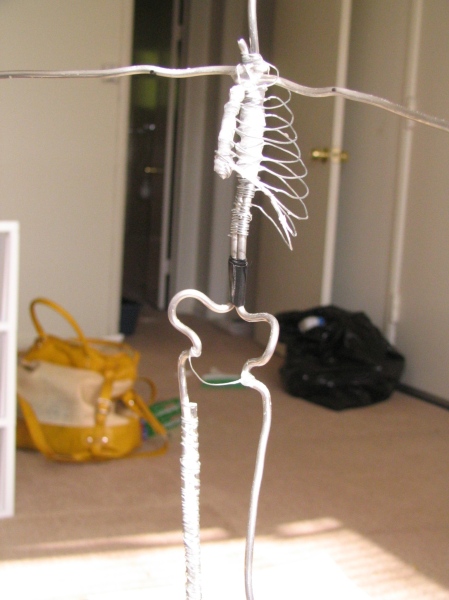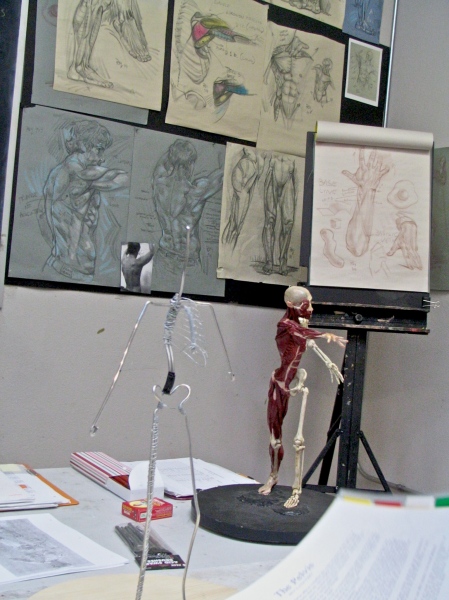The purpose of this blog is in large part educational. Therefore, it cheers my little blogger heart to no end when I look at what search terms people used to get here, and see that some of them are in the form of a question. Here are some answers:
Q. “Is pubic bone below ilium?”
A. Yes. The ilium is the topmost bone in the pelvis. If you put your hands on your waist and move them down until they run into the pelvis, what you will touch is the ilium. Although it’s important to note that in anatomy, terms such as “above” and “below” are relative. The human body is capable of a great range of movement and often positions itself ass over teakettle. This means the artist has to analyze the relationships between major anatomical landmarks for every pose.
Q. “How to draw boobs”
A. How indeed. I suggest, “with lots of enthusiasm” and “by observing how they conform to the underlying form of the rib cage”. Breasts are glands protected by fatty tissue, resting on top of the pectoralis muscles in a bubble of skin. Female breasts have weight and drape over whatever they lie on top of. Kirk Shinmoto has a hilarious, though also crude and slightly awful analogy: think of balloons filled with water and nailed to a barrel.
Conversely, don’t draw breasts as though they are billiard balls. Even artificially augmented breasts are filled with material that is pliable, not rock solid. And solidity is what makes artificially augmented breasts look fake and weird. Breasts are soft. They are meant to be treated – and drawn – with care.
Q. “how rey’s anatomy do skeleton?”
A. In the 3D Anatomy/Ecorche class, we started with constructing a wire armature that would support the weight of the clay and keep the ecorche upright. We sculpted the skeleton on top of that. Because half of the ecorche would be eventually covered with muscle, we made the skeleton on the exposed half very detailed, and on the muscle half, rougher and more general.
Rey stresses that studying the skeleton is the most important part of artistic anatomy. There are a couple of reasons for that.
First, muscles and fatty tissue are very changeable. They look different in every pose, and vary a lot from individual to individual. The skeleton is immutable and though individual variations exist, they are much more subtle.
Secondly, similarly to breasts, muscle and fat tissue drapes. In a way, it has no form of its own, like a dress that assumes its final form only when the wearer puts it on. If you understand the skeleton, you understand how the underlying bones give form to what you see on the surface.
Thirdly, muscles attach to bones. If you figure out where the bones are and what they are doing, all you have to do is connect the origin and insertion points with a tear-drop shape and presto – you have the muscles. (Every muscle has origin and insertion points – think of it as a bridge from point A to point B. When you study muscles, you have to study what points of the skeleton they connect).


